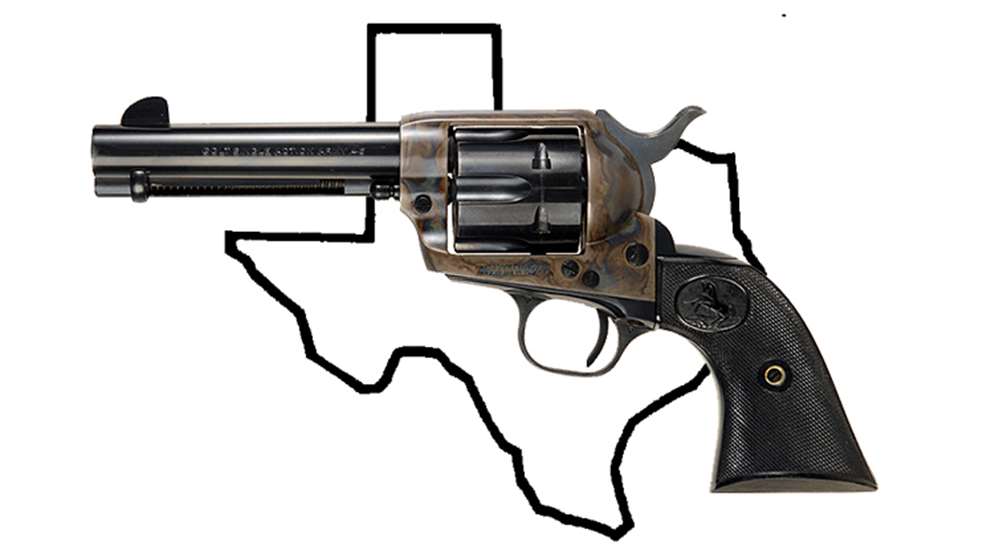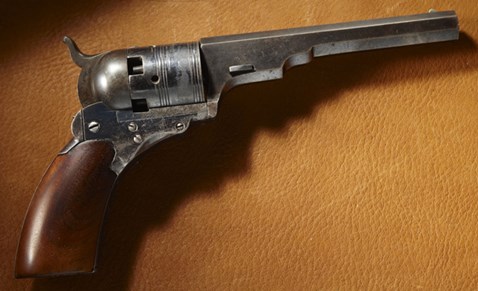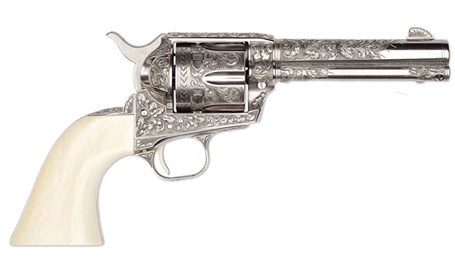
Texas is a state steeped in firearm history. And although the types of firearms that modern Texans own and carry may have changed since they won Texas’ independence from Mexico in 1836, certain guns will always be associated with its fight to become a Republic and well beyond its annexation to the United States and eventual statehood in 1845. Here are five firearms that every Texan (and every American) should know:
The Longrifle
One of the most revolutionary firearms ever produced, the longrifle, known also as the Pennsylvania or the Kentucky rifle, was fundamental to the American colonists’ fight for independence from England in 1776. The American-made hunting rifle fired patched round balls and had long, rifled barrels, which provided a tremendous advantage over the Brown Bess smoothbore muskets used by the Red Coats, accurate at nearly three times the distance. With their carved walnut and maple stocks and brass or bronze inlays, they were as much works of art as they were military arms. Sixty years later, Mexican Texas was filled with frontiersmen and settlers from Tennessee, Kentucky and Virginia, and with them came their hunting rifles. It is possible that some of the same rifles used by George Washington’s sharpshooters were handed down over the generations from fathers to sons and used in Texas’ fight for independence from Mexico. Ironically, the Mexican army was using the same Brown Bess muskets that the British did 60 years earlier. The longrifles kept the Texans in the fight through the successful siege of San Antonio and then the trial of the Alamo where 185 held back 5,000 until the walls were finally breached on that fatal 13th day.
The Colt Paterson
The arrival of this firearm in Texas in 1837 was singularly and uniquely responsible for the turning of the tide in the Texan-Comanche struggle, though the future of these guns appeared at first to be short lived. Rejected by the Texas Army, shunned by President Houston, and eventually warehoused by the defunct Texas Navy, it wasn’t until they were claimed by a newly formed Ranger battalion headed by Captain John Coffee Hays that the guns would fulfill their destiny. Forever tied to Texas through what became known as the Battle of Walker’s Creek, the Colt Paterson Model 5 was a .36-caliber percussion revolver with a folding trigger that allowed the Rangers not only “one shot for every finger,” but since they no longer had to dismount to reload their rifles after firing their initial volley, they now had the chance to neutralize the superior horsemanship of the Comanches. Plains warfare had changed forever, and the relationship between Samuel Colt and the Texas Rangers was only beginning.
Ten years later, Samuel Colt was back at work in partnership with Samuel Walker, a veteran of the Battle of Walker’s Creek, and therefore an avid proponent of the Paterson. Captain Walker was recruiting and outfitting his newly formed division of Texas Mounted Rifles for action in the Mexican-American War and he wanted an improvement upon the single shot pistols that the Army was still using. What he and Colt came away with was “as effective as a common rifle at 100 yards and superior to a musket even at 200.” It was the first revolver purchased by the U.S. Army and the single most powerful handgun ever made, and it would remain so for another 80 years. With six cylinders, stretching 15” long, weighing 4.5 lbs., and firing .44-caliber balls, the Walker was an enormous upgrade from the Paterson, and so big that “only a Texan could carry it.” After its successful field tests in the war, the Walker became enormously popular among soldier and citizen alike.
The Colt Peacemaker
Along came another Colt product, several evolutions beyond the Walker model—the Single Action Army. Firing six metallic cartridges in the revolving cylinder rather than ball-and-percussion caps, the SAA was faster and easier to operate, and it was much lighter and more manageable than the enormous Walker. The powerful and reliable Peacemaker came in a variety of calibers, some capable of firing the same rounds as contemporary rifles, such as the .44-40 Win. center-fire cartridge, though the original .45 Colt remained the most popular. 
Image courtesy jamesdjulia.com
And continuing to follow the pattern, a Colt firearm once again sat in the holsters of the Texas Rangers, this time for two decades. Because of its beauty and elegance, it was and remains desired by all, heroes and villains and everyone in between. The Peacemaker became the go-to firearm in Texas movies, television and literature for a century and has become known as a “gun that won the West.” The chrome-plated .45 version most memorably enshrined as the instrument of justice in the hands of possibly the most famous Texas Ranger of all: Clayton Moore, the “Lone Ranger.”
Winchester Model 1873
And it’s only fitting to finish out the list with the other “gun that won the West.” Sharing the same .44-40 chambering as the SAA, both were equal of the bold claim. The rugged Model ‘73 was the culmination of 25 years of continuing innovation and redesign, from the Volitional Repeater Rifle of 1848 through to the first Winchester rifle of 1866. The iconic lever-action repeater was to be found in every dusty corner of Texas, beneath the western stage-coach seat, behind the frontier cabin door, or hanging from the saddle scabbard of the Texas Rangers. One Ranger, James Gillett, recalled after buying one that it was so perfectly fitted for his work that “for the next six years of my ranger career I never used any other weapon.”





































